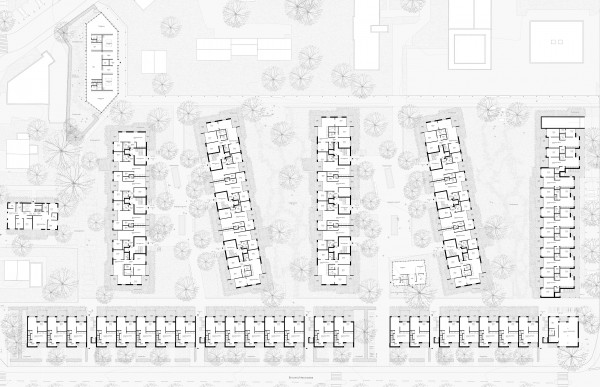Landscape
The city of Zurich has a significant history of social housing construction. Along with this architectural and social history, this housing tradition has always been a reflection of the prevailing social conditions and - with regard to the design of the immediate open spaces - of the prevailing understanding of nature.
In the north of Zurich in particular, housing estates were built by taking the classic garden city as their model. The present project is based on this tradition and transforms the garden city type into a contemporary form.
The design and organisation of the open space meets the needs of residential use, but also offers answers to the overriding demands on our cities, such as maintaining a comfortable urban climate.
Accordingly, the existing tree population will be preserved as far as possible and supplemented by lush tree plantings. A targeted selection of different native park and garden trees provides food and habitat for animals, which not only creates a high biodiversity of flora, but also promotes and supports that of fauna.
Analogous to the neighbourhood on the opposite side of the street, green front gardens along Binzmühlestrasse form the addresses of the individual units. The staggered row is made permeable by covered alleys leading into the settlement.
The interior of the site offers a sequence of development and garden courtyards, providing space for a variety of recreational and play activities, whereby the creation of a high proportion of unsealed and species-rich green spaces is also a priority here.
The topography of the settlement is shaped by an interplay of flat terraces and gently sloping meadows, which are interlaced three-dimensionally with the buildings staggered in the terrain.



















